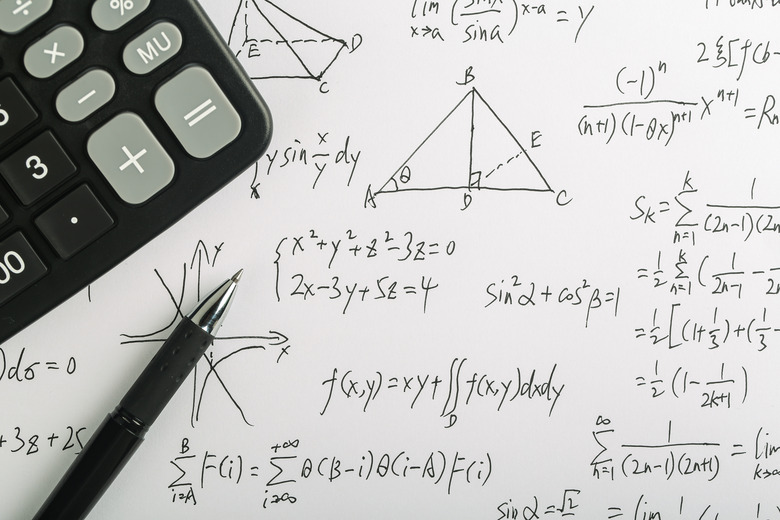3 Methods For Solving Systems Of Equations
The three methods most commonly used to solve systems of equation are substitution, elimination and augmented matrices. Substitution and elimination are simple methods that can effectively solve most systems of two equations in a few straightforward steps. The method of augmented matrices requires more steps, but its application extends to a greater variety of systems.
Substitution
Substitution
Substitution is a method of solving systems of equations by removing all but one of the variables in one of the equations and then solving that equation. This is achieved by isolating the other variable in an equation and then substituting values for these variables in other another equation. For example, to solve the system of equations x + y = 4, 2x – 3y = 3, isolate the variable x in the first equation to get x = 4 – y, then substitute this value of y into the second equation to get 2(4 – y) – 3y = 3. This equation simplifies to -5y = -5, or y = 1. Plug this value into the second equation to find the value of x: x + 1 = 4 or x = 3.
Elimination
Elimination
Elimination is another way to solve systems of equations by rewriting one of the equations in terms of only one variable. The elimination method achieves this by adding or subtracting equations from each other in order to cancel out one of the variables. For example, adding the equations x + 2y = 3 and 2x – 2y = 3 yields a new equation, 3x = 6 (note that the y terms cancelled out). The system is then solved using the same methods as for substitution. If it is impossible to cancel out the variables in the equations, it will be necessary to multiply the entire equation by a factor to make the coefficients match up.
Augmented Matrix
Augmented Matrix
Augmented matrices can also be used to solve systems of equations. The augmented matrix consists of rows for each equation, columns for each variable, and an augmented column that contains the constant term on the other side of the equation. For example, the augmented matrix for the system of equations 2x + y = 4, 2x – y = 0 is [[2 1], [2 -1]...[4, 0]].
Determining the Solution
Determining the Solution
The next step involves using elementary row operations such as multiplying or dividing a row by a constant other than zero and adding or subtracting rows. The goal of these operations is to convert the matrix to row-echelon form, in which the first non-zero entry in each row is a 1, entries above and below this entry are all zeros, and the first non-zero entry for each row is always to the right of all such entries in the rows above it. Row-echelon form for the above matrix is [[1 0], [0 1]...[1, 2]]. The value of the first variable is given by the first row (1x + 0y = 1 or x = 1). The value of the second variable is given by the second row (0x + 1y = 2 or y = 2).
Applications
Applications
Substitution and elimination are simpler methods of solving equations and are used much more frequently than augmented matrices in basic algebra. The substitution method is especially useful when one of the variables is already isolated in one of the equations. The elimination method is useful when the coefficient of one of the variables is the same (or its negative equivalent) in all of the equations. The primary advantage of augmented matrices is that it can be used to solve systems of three or more equations in situations where substitution and elimination are either unfeasible or impossible.
Cite This Article
MLA
Wallulis, Karl. "3 Methods For Solving Systems Of Equations" sciencing.com, https://www.sciencing.com/3-methods-solving-systems-equations-8644686/. 13 March 2018.
APA
Wallulis, Karl. (2018, March 13). 3 Methods For Solving Systems Of Equations. sciencing.com. Retrieved from https://www.sciencing.com/3-methods-solving-systems-equations-8644686/
Chicago
Wallulis, Karl. 3 Methods For Solving Systems Of Equations last modified March 24, 2022. https://www.sciencing.com/3-methods-solving-systems-equations-8644686/
